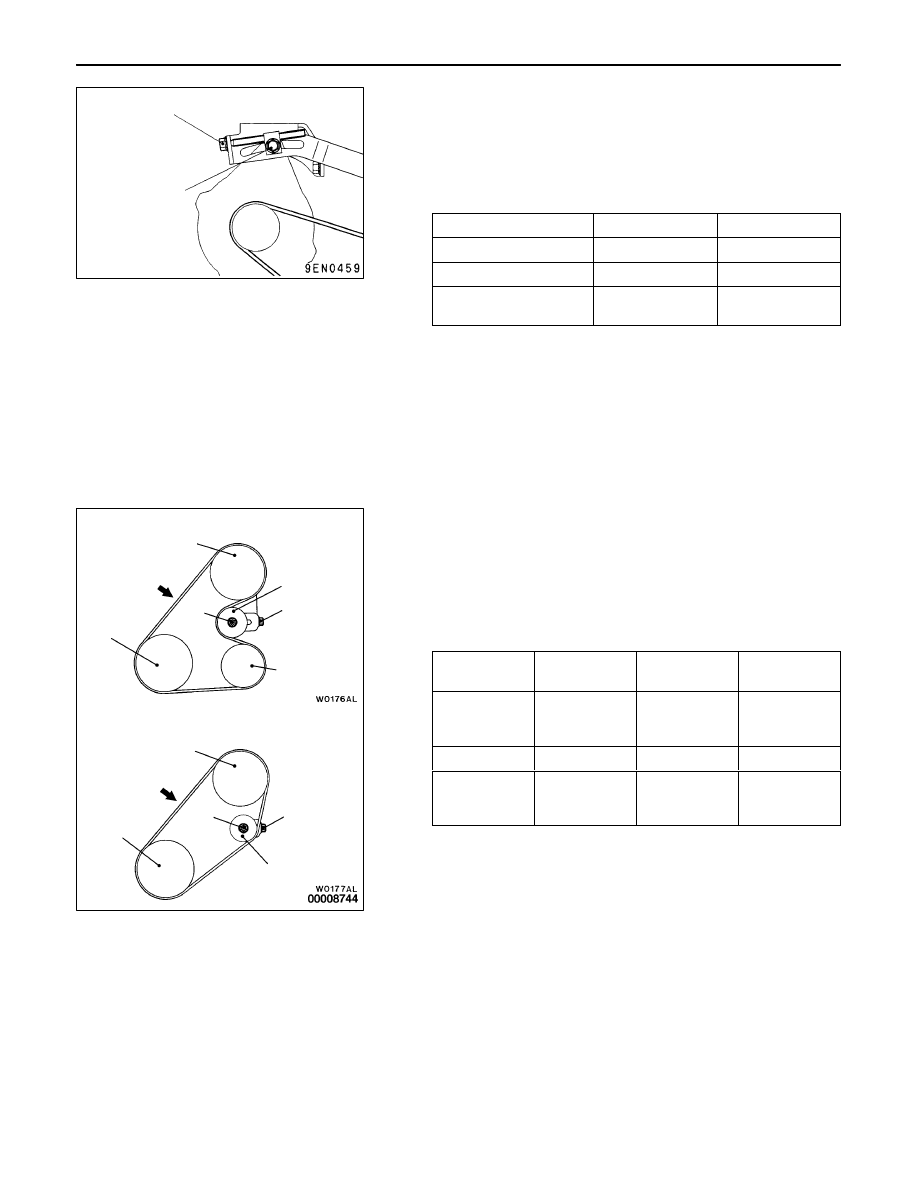Mitsubishi Pajero Pinin. Manual - part 24

ENGINE <4G9-MPI> –
On-vehicle Service
11B-7
ALTERNATOR DRIVE BELT TENSION ADJUSTMENT
1.
Loosen the nut of the alternator pivot bolt.
2.
Loosen the lock bolt.
3.
Use the adjusting bolt to adjust the belt tension and belt
deflection to the standard values.
Standard value:
Items
When adjusted
When replaced
Vibration frequency Hz
155 – 175
203 – 234
Tension N
343 – 441
588 – 784
Deflection
(Reference) mm
10.5 – 12.0
6.7 – 8.5
4.
Tighten the nut of the alternator pivot bolt.
Tightening torque: 44
±
10 N·m
5.
Tighten the lock bolt.
Tightening torque: 23
±
2 N·m
6.
Tighten the adjusting bolt.
Tightening torque: 5.0
±
1.0 N·m
POWER STEERING OIL PUMP DRIVE BELT <Vehicles
without A/C>, POWER STEERING OIL PUMP AND A/C
COMPRESSOR DRIVE BELT <Vehicles with A/C> TENSION
CHECK AND ADJUSTMENT
1.
Check if the belt tension is within the standard value using
one of the methods below.
Standard value:
Items
When
checked
When
adjusted
When
replaced
Vibration
frequency
Hz
114 – 139
121 – 133
145 – 166
Tension N
392 – 588
441 – 539
637 – 833
Deflection
(Reference)
mm
10.0 – 12.0
10.0 – 11.0
7.0 – 9.0
<When measuring the vibration frequency>
With your finger tip lightly tap the centre of the belt between
the pulleys in the location shown by the arrow in the
illustration and then measure the belt vibration frequency.
NOTE
Refer to P.11B-6 for information regarding the vibration
frequency measurement method using MUT-
II
.
<When measuring the tension>
Use a belt tension gauge to measure the belt tension.
Adjusting bolt
Lock bolt
<Vehicles without A/C>
<Vehicles with A/C>
Oil pump pulley
Crankshaft
pulley
Tension
pulley
A
B
Oil pump pulley
Crankshaft
pulley
Tension
pulley
A
B
A/C
compressor
pulley